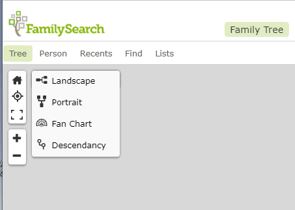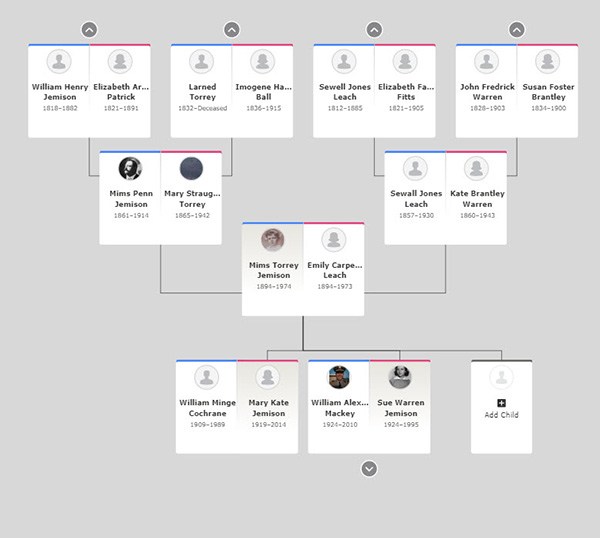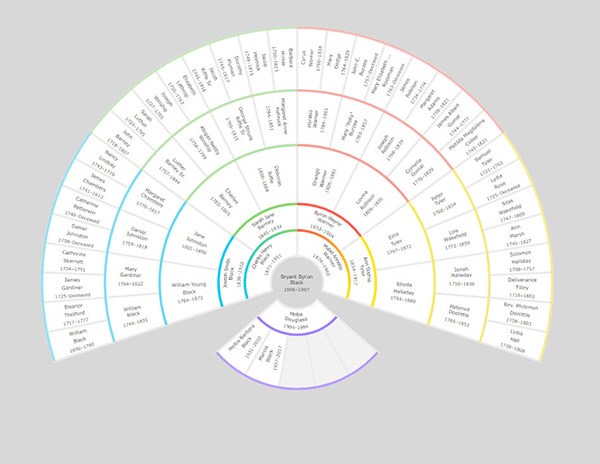 When you are trying to make sense of family connections, seeing is believing.
When you are trying to make sense of family connections, seeing is believing.
The FamilySearch Family Tree gives you four different ways to view pedigree charts. Each visual representation gives you a different perspective and may help you learn more about your ancestors.
Landscape View

The landscape view is displayed horizontally. You are in the center, descendants are on the left, and ancestors are on the right. In this view, you can see the children of a couple by clicking Children at the bottom of the couple box. Click the arrow again to return to the previous view.
Portrait View

The portrait view displays the family tree in a vertical position, with you and your descendants at the bottom and your ancestors above you.
Fan Chart View

The fan chart is a colorful, fascinating tool that shows up to 7 generations. To the right of the chart view drop-down, you can choose how many generations you would like to see. Your name appears at the center bottom of the fan chart, with your spouse and children underneath. Maternal ancestors appear on the right, and paternal ancestors appear on the left. Your spouse’s ancestors will not show up in this view unless you are looking at your spouse’s fan chart.
The fan chart can provide hints that make it easy to identify where your line ends. This view also includes a chart-view option list. Using this list, you can select from multiple, color-coded views that illuminate different kinds of information in your tree. This information includes your family lines, the birth countries of your ancestors, the number of sources attached to each relative, the number of stories attached to each relative, and the number of photos attached to each relative.
Descendancy View

The descendancy view can help you find the descendants of your ancestors. It is especially useful if you have a very full family tree. This view shows more than parents, grandparents, and great-grandparents. With the descendancy view, you may also find distant aunts, uncles, and cousins.
Learn more in the article “Different Family Tree Views Provide Perspective.”
Continue reading at the original source →



